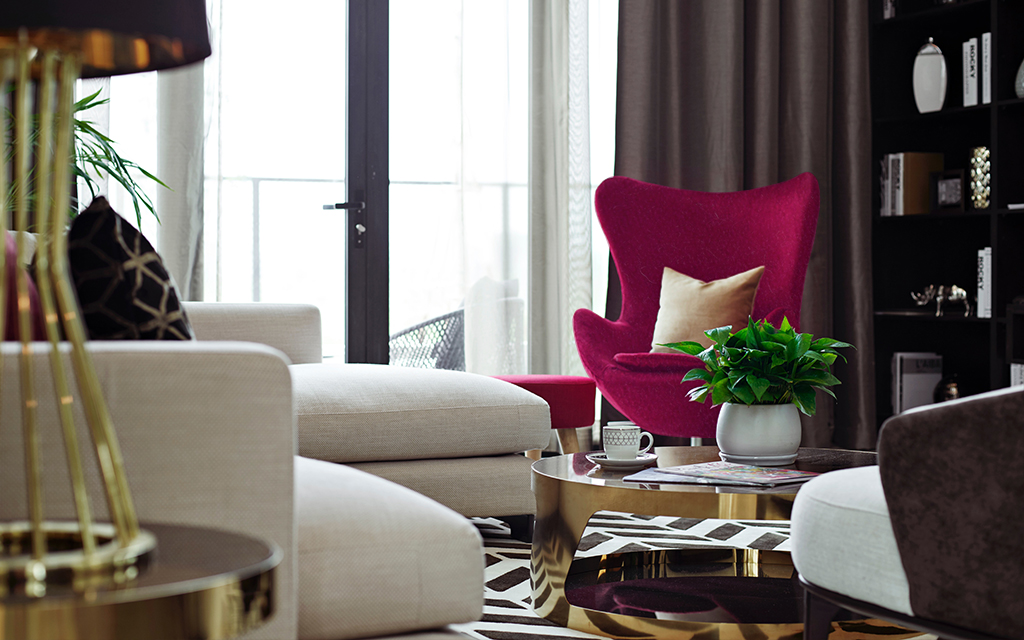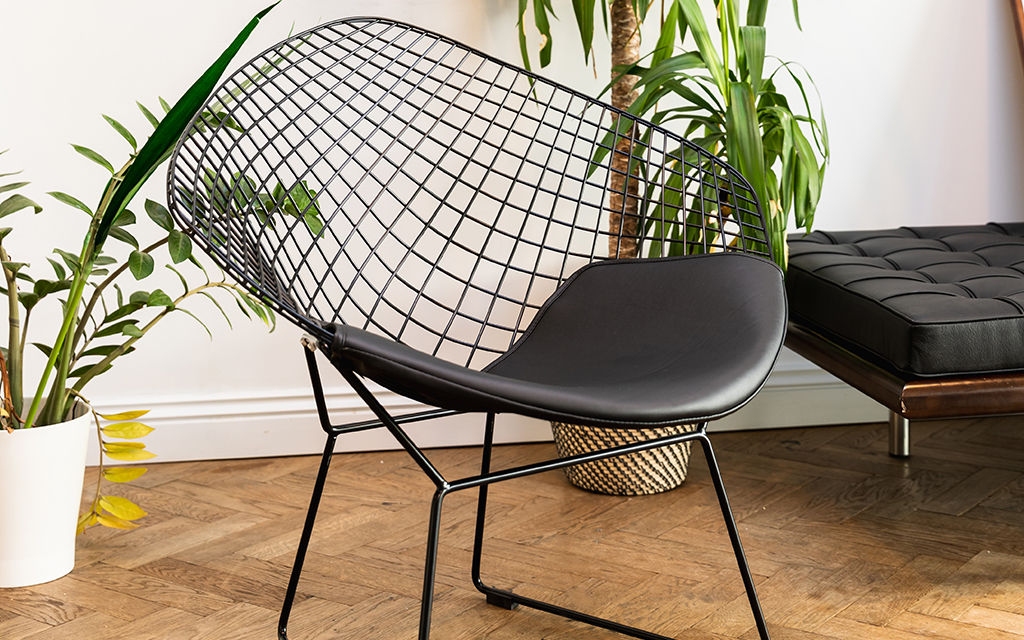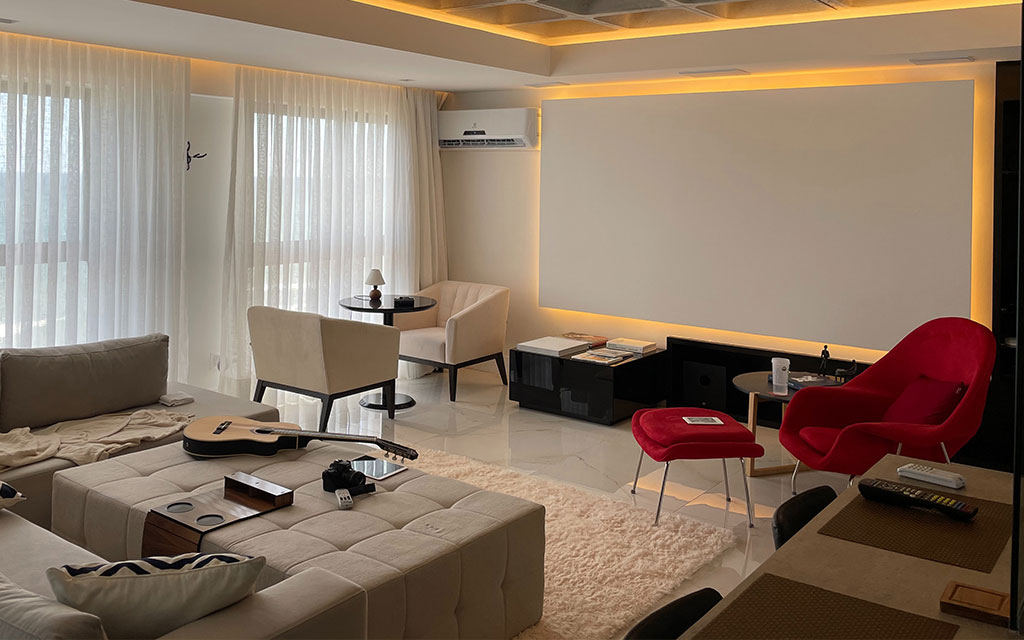Colour can have the power to transform the look of any room. The use of colour is considered one of the most important elements by interior designers when designing a home.
All colours evoke emotions, whether you notice them or not. With a large effect on your mood, it can be important to cleverly choose the right colours for furniture pieces depending on how they will be used.
In this article, we’re sharing our top tips on how you can choose the right colours for your accent furniture so you can enjoy your home’s design all year round.
Decide On The Type Of Room You Want To Decorate
When choosing the right colour for your accent furniture pieces, we are here to help with advice on what colours work for different types and styles of rooms. We also offer up to 6 free upholstery samples to make your decision easier!
If you want to make the best decision on your interior’s colour palette, you must think first about what the chosen room will be used for, then read our blog on How To Create A Complementary Colour Scheme In Interior Design.
A Room For Relaxation
If your chosen room is designed for relaxation, stick to softer, neutral, or lighter colours. Neutral colours have very little saturation, which means they serve well as a relaxing background colour that isn’t too distracting for the eye. Other relaxing colours you could use are sky blue, lilac, light pink, sage green, or tan brown.
A Room To Socialise Or Play
Bright colours stimulate the brain, so they are great for a room meant for doing activities and stimulating the mind. Bold colours can create a more dramatic look and achieve a style characterised by a lot of energy and vividness. Bright colours to consider are lime green, fire-engine red, canary yellow, teal, tangerine orange or forest green.
Consider The Size Of Your Spaces

If you choose a smaller room, lighter colours help to make spaces look larger as it maximises the room’s natural light by reflecting it. A space that is overall light and bright makes it feel open and airy!
With larger rooms, you can use a wider variety of colours more freely. However, too many colours could make a larger space feel overwhelming, so to stay safe, you can choose two complementary colours, so the space feels coherent and well thought through.
Now it’s time to consider what accent furniture types would suit each room. Will the accent furniture be the start of a changing interior design decor? Does it need to blend seamlessly with any other changes within the room?
A focal piece of accent furniture must stand out from the rest of the room, so a bolder complementary or contrasting colour will be a perfect choice. Remember that contrasts between colours are spotted the most easily!
If you change your decor, consider what colours complement your new accent furniture colour choices. If the chosen piece needs to blend seamlessly with a changing decor, a neutral dark or light colour will complement any colour or style changes well.
Where Will The Accent Furniture Be Placed?
Flooring
Flooring can make any mid-century furniture piece look different. Dark-coloured items will blend very well with a dark floor, and the same goes for light floors and light furniture. If you want your accent furniture pieces to stand out even more, choose a contrasting colour from the floor it will be placed on, or purchase a rug that contrasts the floor and the accent piece.
If you have dark floors and furniture, one way to make the piece stand out is to buy another with lighter legs to uplift the overall look.
Backdrop

Like the flooring, the wall backdrop can also make a piece look completely different. Against a light-coloured wall, a dark-coloured piece of furniture will create the best contrast.
Contrasting is one of the best ways to add character to your home, as a lack of contrast can make the space feel flat and predictable. However, remember that the most important thing is to stay true to your interior design style!
Juxtaposition is a term used to describe placing two contrasting elements together. If your accent furniture doesn’t contrast against the wall, you could place a contrasting piece of furniture or element next to your accent piece. For example, you could pair a Dining Side Chair with a sheepskin throw.
Another way to create contrast is to add a colour block or archway that will contrast your accent furniture piece on the wall behind where it will be placed. This allows the wall to stay in its original colour whilst achieving the statement you may be after.
The Power Of Colour In Interior Design
Have you ever found that colours can look completely different depending on the light level? This is known as metamerism, where colours can be perceived as different hues depending on the light level. This is something to consider when purchasing paint or a large piece of furniture. If you are concerned about metamerism when purchasing your next Pash Classics products, we offer free samples and will do what we can to resolve this issue.
If you feel secure in your design approach, the colour approach can be the task that always seems the most difficult to know whether it is right or wrong. There are many elements to affect this, such as colour, which can be the most relative part when decorating your home. In case you missed it, we have a great article on Modern Interior Design Ideas: How To Spend Time Uplifting Your Home if you’re looking for some great tips!
Everybody perceives colour differently, and its surroundings can affect the perception. If you’re struggling to choose an effective interior design colour palette, one easy way to find a failsafe colour palette is to find a piece of art you like and pull the colours from it.
Final Thoughts
Accent furniture colours can add personality and joy to a space, and even the smallest dash of brightness can make a vast difference. Decorating your home should be fun, and it pays to throw caution to the wind by being playful with colour, especially in rooms where you spend lots of time!
For more tips and advice on all things interior design, check out our blogs on:




